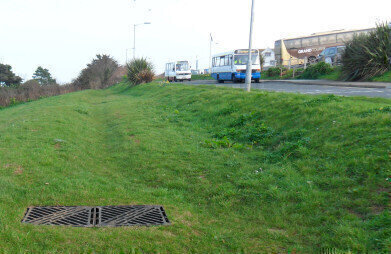Water/Wastewater
Retrofit Suds Scheme Solves Car Park Flooding
Jun 28 2012
Behind the steep, tourist-beloved streets around the cliffs and beaches of St Ives, Cornwall, lies the infrastructure that the town’s residents use all year round. Here a retrofit SuDS scheme, based on Hydro International’s (UK) stormwater storage and infiltration technologies and Hydro-Brake Flow Controls has alleviated flooding problems at a busy town car park, caused by the frequent heavy rainfall.
The scheme is highlighted as an exemplar of tackling surface water flood risk in a retrofit context in CIRIA’s new Guidance on Retrofitting to Manage Surface Water.
“We needed a surface water attenuation solution for Trenwith Car Park which would be highly effective within the site’s existing footprint, and would not badly disrupt the users of the car park during construction,” comments Nigel Higgins, project leader, Highways, for Cornwall Council. “Since its installation in 2010, we have had no more complaints about the car park flooding, despite poor weather.”
The Trenwith car park provides connection with the town buses, as well as serving the well-used leisure centre, local businesses and residents. With a hectare of paved surface, heavy downpours used to cause frequent local flooding, especially down the lower path descending towards the part-culverted stream at the bottom of the slope.
“We also installed speed humps to divert the water flowing in from the grassed overflow car park areas to run along the base of existing Cornish hedges,” adds Nigel. “However that was only marginally better.
“With the Environment Agency, we decided that the best answer would be to combine these diversions with a SuDS installation along the bottom of the car park slope. The SuDS scheme would provide both underground infiltration and storage attenuation as a two stage process to protect the properties and the watercourse further down the slope.
“Using Hydro’s Stormcell and Stormbloc modular load bearing geocellular blocks enabled a simple shallow (approx. 1.5 m deep) excavation, which could easily be paved over and landscaped. It is an excellent example of a retrofit urban scheme.”
The primary protective installation comprises a drainage channel along approximately 100 m across the slope, interconnecting a series of infiltration pits where Stormbloc is installed. The outflow of the channel is connected to the second line of defence, an attenuation storage tank, comprising nearly 140 cu.m. of Stormcell with a Hydro-Brake Flow Control device at the outlet.
This secondary protective tank is designed to provide surface water storage when the infiltration channel design is exceeded. It controls the maximum discharge into the water course. Stormcell is designed to minimise silting of the storage volume in order to maximise availability and the whole installation meets one in 100 year event requirements.
According to the CIRIA case study, the scheme reduces the rate and amount of surface water entering the Park Avenue and Stennack areas of the town below the car park. An earlier CCTV survey of the Park Avenue sewers revealed a problem with both the condition and alignment of a section of pipe and manhole factors that had evidently contributed to the backing up and surcharging of surface water at this location.
Since completion of the scheme, Cornwall Council’s Emergency Management Service received more than six notices of ‘flash warning of heavy rain for Cornwall” issued by the Met Office. The local highway team have confirmed that there have been several incidents of intense rain events in St Ives. Events similar to those have caused problems in the past, however, they did not receive any reports of flooding in the Park Avenue or Stennack Area.
Events
Jul 15 2025 Brighton, UK
Jul 23 2025 Sydney, Australia
Aug 24 2025 Stockholm, Sweden and online
Aug 27 2025 Busan, South Korea
Sep 02 2025 Mexico City, Mexico






.jpg)







